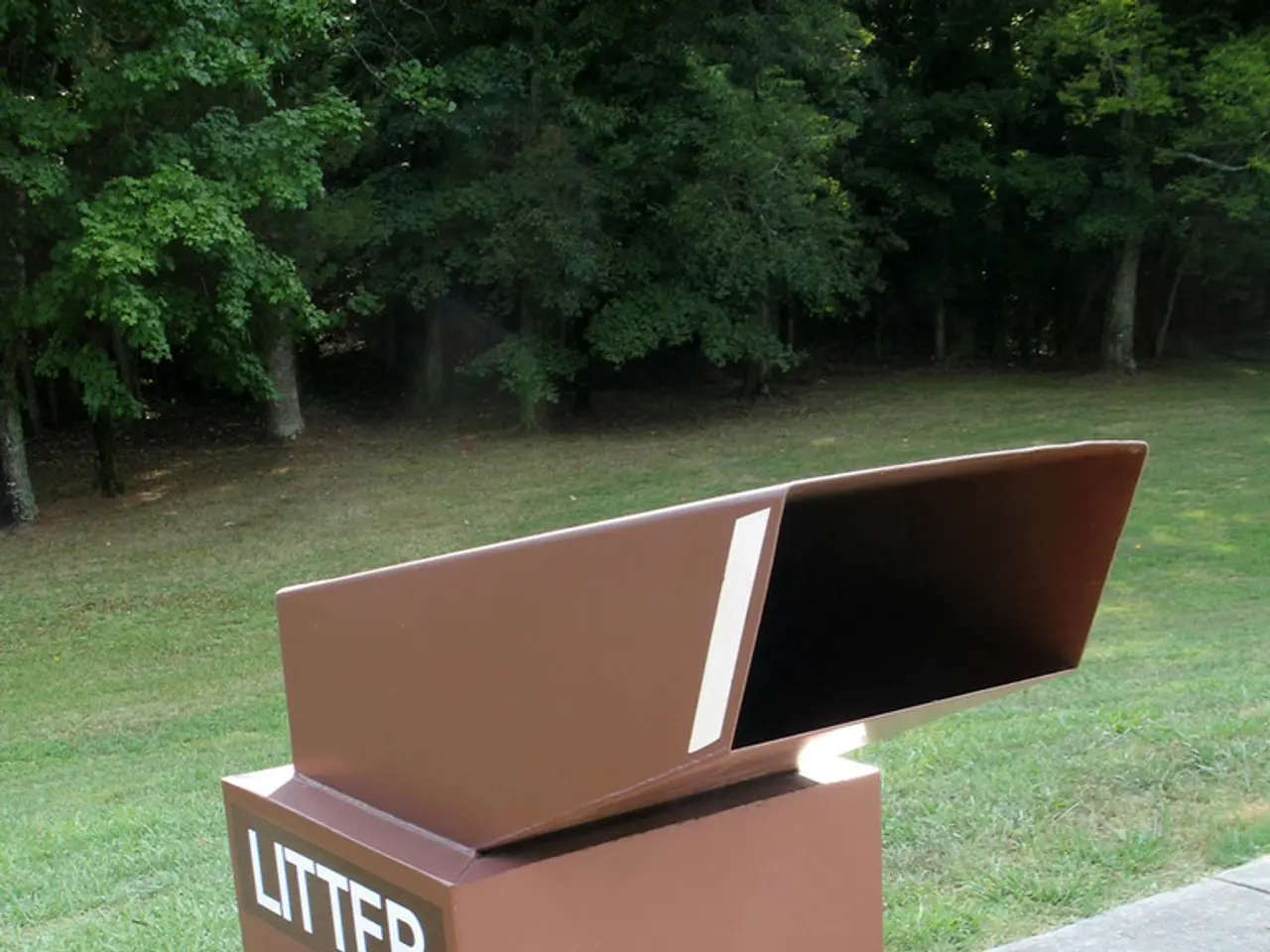Mastering the Art of Defecation in Woods During Camping, Hiking, or Backpacking Expeditions
In the great outdoors, nature calls, and it's essential to answer in a way that minimises environmental impact and preserves the beauty of our wild spaces. Here's a comprehensive guide on how to "go" in the woods, following the Leave No Trace principles.
First and foremost, **choose the right location**. Aim to be at least 200 feet (about 70 paces) away from water sources, trails, and campsites to avoid contaminating water and disturbing others. The spot you choose should also consider factors such as soil type, privacy, and ground elevation.
Once you've found the perfect spot, **dig a cathole**. Use a small shovel or trowel to dig a hole 6 to 8 inches deep, where you will deposit your waste. This depth helps ensure proper decomposition and reduces animal disturbance.
Afterwards, **use the cathole and cover it**. After defecating, cover the waste with the original soil and disguise the hole using natural materials like leaves or twigs, so animals are not attracted to it and it blends into the environment.
**Dispose of toilet paper and hygiene products properly**. Carry out all toilet paper, wipes, and feminine hygiene products in a sealed plastic bag—do not bury or leave them behind, as they do not decompose quickly and harm the environment.
**Maintain hygiene** is also crucial. If you need to wash, do so at least 200 feet away from water sources using small amounts of biodegradable soap, and scatter strained water.
In places where digging isn't allowed or possible, pack everything out using a WAG bag or similar system. This is especially important in sensitive environments like alpine areas, deserts, or narrow river canyons, where your impact matters even more, and small mistakes can cause lasting damage.
To make the process easier, a poop kit should be prepared before heading into the woods. This kit should include toilet paper, sealable plastic bags, a trowel, hand sanitizer, and biodegradable soap.
In some cases, such as on big rivers, peeing directly into the water is allowed as flowing water dilutes it. However, it's always best to check local regulations before assuming it's acceptable.
By following these steps, you help protect the outdoors for future visitors and make sure the places you love stay wild. Remember, a little planning and consideration can go a long way in preserving our beautiful wilderness areas.
Lastly, a few recommended tools for your poop kit include the Deuce, a lightweight digging tool for making catholes, and a Kula Cloth, recommended for women for comfortable outdoor peeing. Always sanitize your hands well after cleaning up to ensure good backcountry hygiene.
[1] Leave No Trace Centre for Outdoor Ethics. (n.d.). Human Waste. Retrieved from https://lnt.org/learn/7-principles/waste-reduction [2] Leave No Trace Centre for Outdoor Ethics. (n.d.). Water. Retrieved from https://lnt.org/learn/7-principles/minimize-impact-on-water [3] Leave No Trace Centre for Outdoor Ethics. (n.d.). Camping. Retrieved from https://lnt.org/learn/7-principles/respect-neighbours [4] Leave No Trace Centre for Outdoor Ethics. (n.d.). Plan Ahead and Prepare. Retrieved from https://lnt.org/learn/7-principles/plan-ahead-and-prepare [5] Leave No Trace Centre for Outdoor Ethics. (n.d.). Trash Your Trash. Retrieved from https://lnt.org/learn/7-principles/trash-your-trash
- Embrace the lifestyle of outdoor-living when camping, ensuring that geared-up with tents, backpacking equipment, and hiking boots, you respect nature and the environment.
- The location of your camping trail is crucial; ensure it's at least 200 feet away from water sources, trails, and campsites to preserve the beauty of wild spaces.
- Dig a cathole 6 to 8 inches deep, following Leave No Trace principles, and cover your waste properly to minimize environmental impact.
- Dispose of toilet paper and hygiene products responsibly, carrying them out in a sealed plastic bag, as they do not decompose quickly in nature.
- Maintain good hygiene by washing at least 200 feet away from water sources, using small amounts of biodegradable soap, and properly scattering strained water.
- In some delicate ecosystems, such as alpine areas, deserts, or narrow river canyons, you should pack everything out using a WAG bag to ensure proper disposal and preserve the environment for future outdoor-living enthusiasts.





